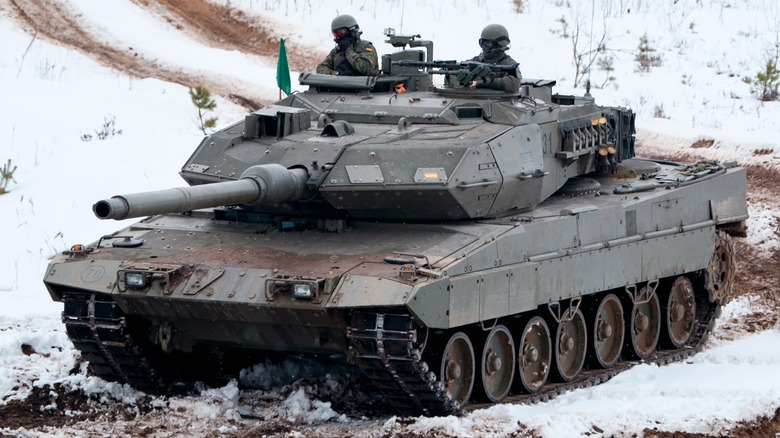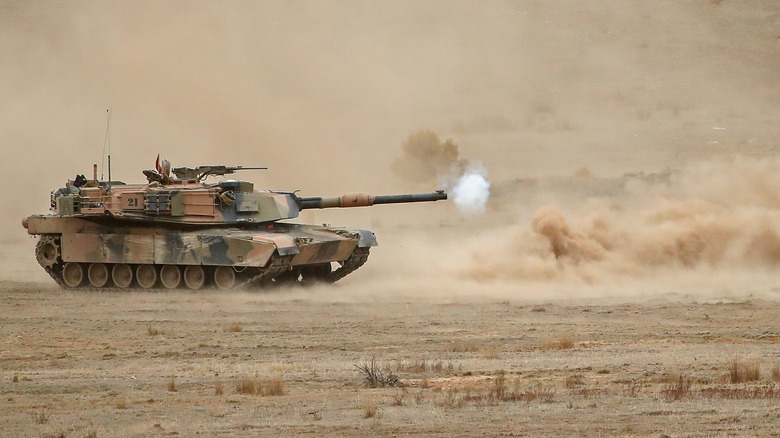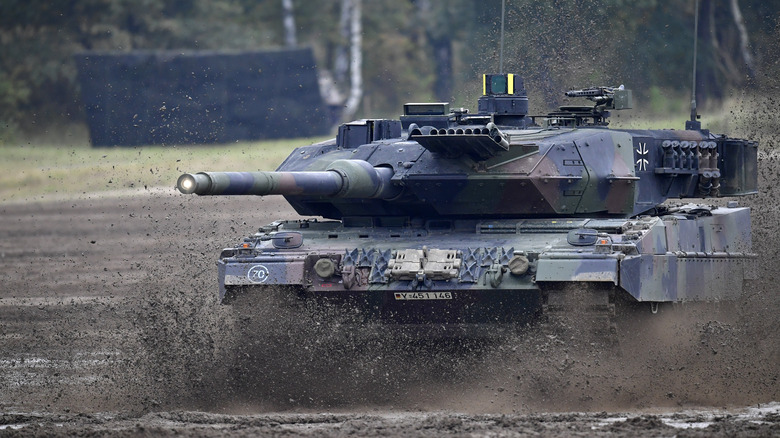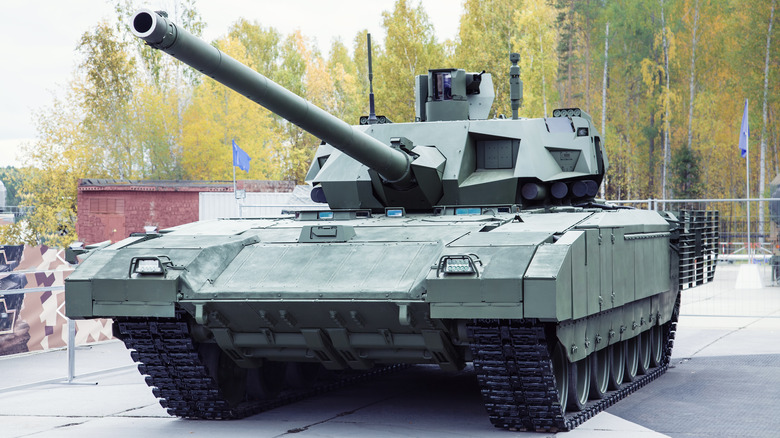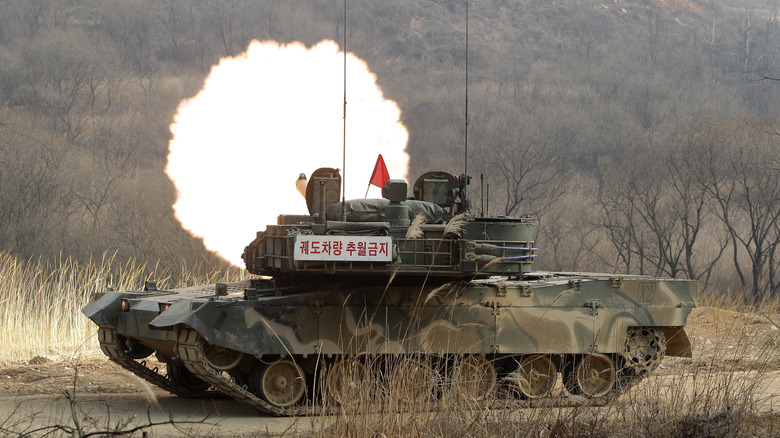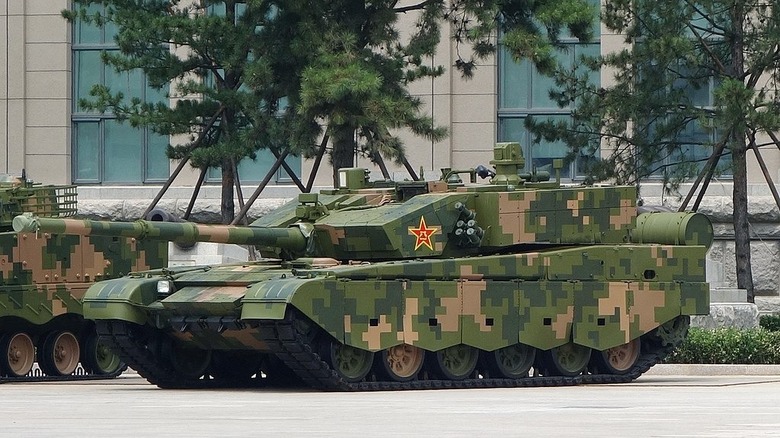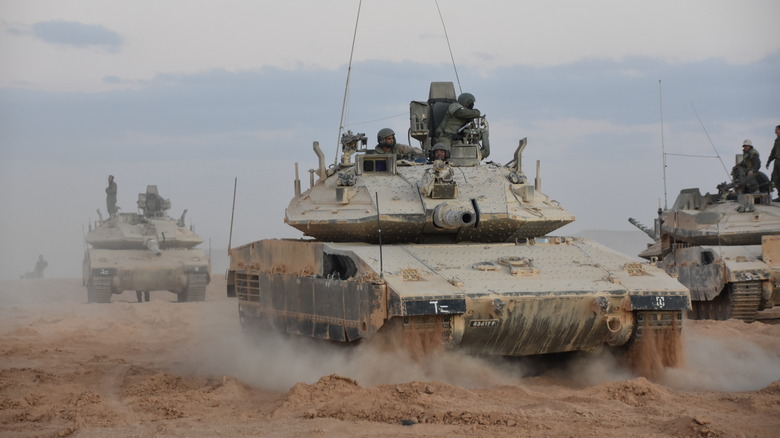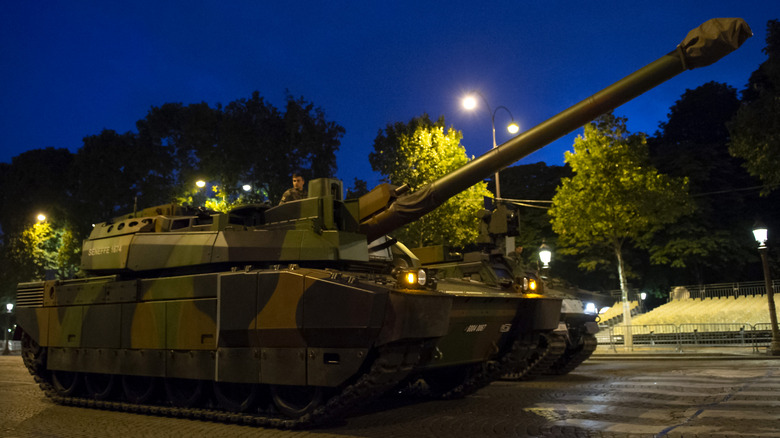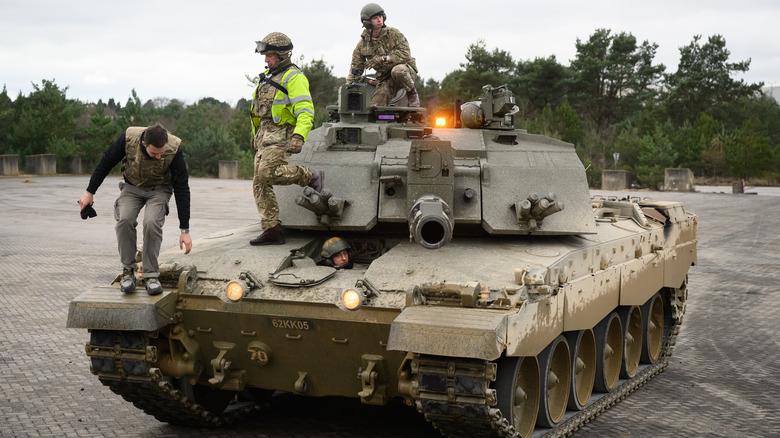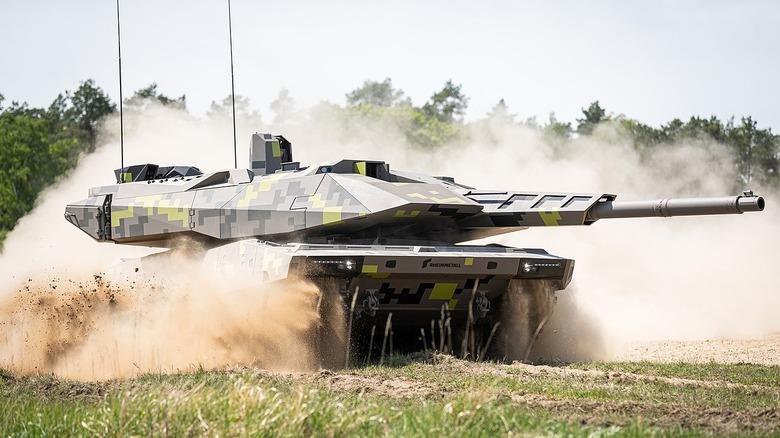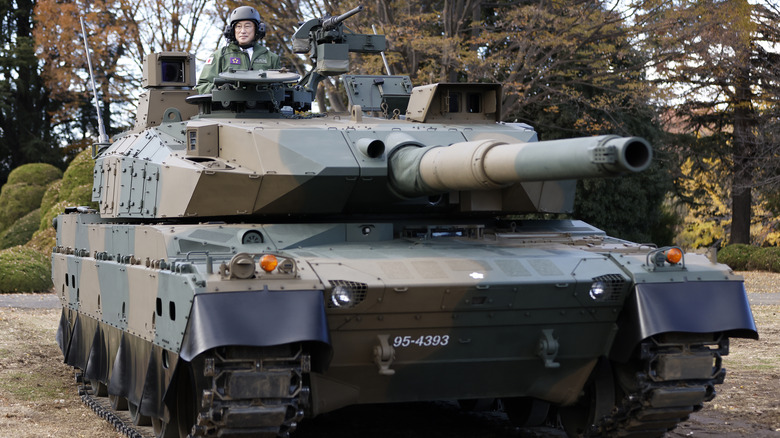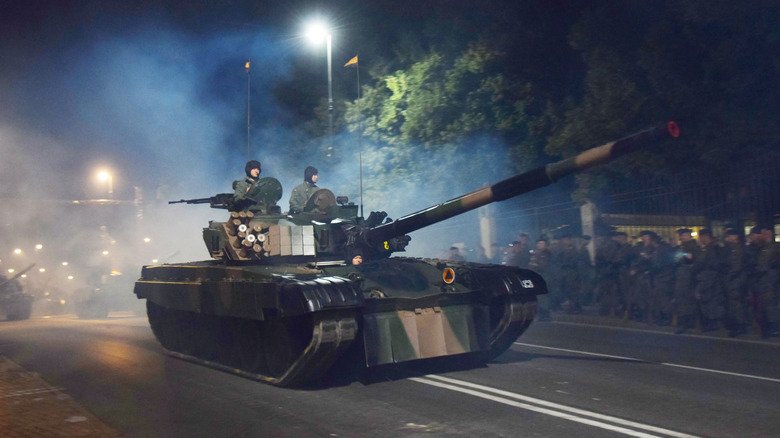12 Best Military Tanks In The World In 2023
Tanks have been a staple of warfare for over a century and continue to be one of the most important weapons on the battlefield. Ever since their emergence in World War 1, when saber-wielding commanders charged them on horseback, the evolution of tanks has left a lasting mark on the face of warfare.
By the end of World War 1, the battlefields were a stalemate of trenches that could only be broken with "landships," the precursors of the modern military tanks we know today. World War 2 saw the emergence of advanced and specialized tanks purpose-built to excel in specific battlefield roles. Light, heavy, and medium tanks fought side by side, each contributing their unique strengths to the war effort.
However, it was during the Cold War that tank technology was advanced enough to produce the main battle tank (MBT). This tank class was sufficient to hold the armament of a heavy tank with the weight of medium-sized tanks and the speed of lightweight tanks. Modern militaries have largely replaced multiple specialist tanks in favor of main battle tanks that boast nearly impenetrable armor and deliver devastating firepower.
Here, we explore the top contenders for the 12 best military tanks in the world, where cutting-edge technology, firepower, armor, and mobility converge to shape the destiny of nations on the modern battlefield.
M1 Abrams Main Battle Tank (USA)
Since its introduction in the 1980s, the M1 Abrams has reigned as the United States' main battle tank and one of the best tanks ever made. Designed by General Dynamics and bearing the name of General Creighton W. Abrams, this tank pays homage to its namesake, a distinguished commander of the 4th Armored Division who led tank operations during the height of World War II.
Continually evolving, the M1 Abrams adapts to enhance combat effectiveness, integrating cutting-edge equipment like Combat Identification Panels (CIP), Tank Urban Survival Kits (TUSK), and active protection systems. Battle-tested and refined, these advancements position the Abrams as one of the world's most impressive tanks of all time.
While the latest version, the M1A2 Abrams, takes the spotlight, the dependable M1A1 variant remains active in diverse theaters and is loaned to allied forces by the US government. Armed with a 120mm smoothbore cannon that lacks rifling inside the barrel and is supplemented by a .50 caliber alongside a 7.62mm machine gun, the M1A2 Abrams delivers devastating firepower.
Propelled by a 1500 HP engine, the Abrams maneuvers its 55-ton frame at a maximum speed of 42 mph. To ensure crew safety, it features Chobham armor. As a vital component of the US military strategy, the Abrams has continually evolved through major operations, refining its capabilities. The current incarnation, the M1A2, is filled with advanced electronics and defense systems, making it one of the deadliest tanks on the battlefield today.
Leopard 2A7 Main Battle Tank (Germany)
The Leopard tank stands as Germany's iconic main battle tank, having served in various capacities since its introduction in 1979. This German-engineered masterpiece has garnered global recognition, finding its place as the main battle tank of choice for over a dozen nations.
The Leopard 2A7 represents the latest evolution of Germany's formidable main battle tank, expertly crafted by Krauss-Maffei. At its core, the tank boasts the powerful Rh-120 main armament, a 120mm cannon designed by Rheinmetall to deliver lethal precision on the battlefield.
What sets the Leopard 2 apart and cements its status as one of the world's premier tanks is its constant innovation and remarkable service record. With a notable presence in conflicts spanning the Balkans, the Middle East, and beyond, the Leopard has proven its mettle in diverse combat environments. While initially exclusively utilized by Germany, the tank's success has led to its export and licensed production in various countries worldwide.
The latest iteration, the Leopard 2A7, entered military service in 2014, equipped with cutting-edge advancements in armor protection and state-of-the-art fire control systems. Its design and technological prowess make it a force to be reckoned with on the modern battlefield, showing the pursuit of excellence that has characterized German tank engineering for decades.
T-14 Armata Main Battle Tank (Russia)
The T-14 Armata, a cutting-edge main battle tank developed by Russian company Uralvagonzavod, made its debut at the Moscow Victory Day Parade in May 2015. Originally intended to be an addition to the Russian Army with a planned production of 2,300 units, the project faced funding delays, resulting in the cancellation of the full production run. Presently, only 100 tanks have been delivered.
Russia's T-14 Armata MBT offers enhanced protection and crew survivability by providing a focus on heavier armor. Equipped with a 125mm 2A82-1M smoothbore cannon, which benefits from an automated loader, the Armata packs significant firepower. In addition to the main cannon are the Kord 12.7mm machine gun and PKTM 7.62mm machine gun, which provide additional defensive capabilities.
Impressively, the T-14 Armata achieves a top speed of 55 mph and has a remarkable operational range of about 300 miles thanks to its A-85-3A turbocharged diesel engine. These features contribute to the tank's agility and operational flexibility in any environment. While the exact specifications and capabilities of the Armata remain closely guarded secrets, its limited production and advanced features solidify its status as a symbol of Russian military innovation.
K2 Black Panther Main Battle Tank (South Korea)
The Hyundai Rotem K2 Black Panther, also known as the Korean Main Battle Tank, stands as a cutting-edge marvel engineered specifically for the Republic of Korea Army. Built to deliver exceptional mobility, firepower, and self-defense capabilities, the K2 Black Panther MBT is an imposing force on the battlefield.
Equipped with a formidable arsenal, the Black Panther boasts a 120mm smoothbore cannon capable of firing improved kinetic energy ammunition. What sets it apart is the inclusion of an autoloader system, enabling seamless ammunition loading even in challenging terrain. Complementing its main guns are supplementary machine guns in 7.62mm and 12.7mm calibers, providing enhanced defensive capabilities.
The K2 Black Panther demonstrates remarkable agility with a top speed of 43 mph and an impressive operational range of 280 miles, providing swift and efficient maneuverability across many diverse landscapes.
The tank's defensive capabilities are equally impressive, incorporating composite armor and explosive reactive armor (ERA). n addition, blow-off panels on the ammo rack enhances protection against explosions, further safeguarding the crew and the tank itself.
T-99A Main Battle Tank (China)
China's Type 99 tank debuted in 1999 during the National Day Parade in Beijing, marking the rise of the People's Republic of China as a military power on the global stage. Initially derived from the now-outdated T-72 Russian tank, the T-99 has undergone significant upgrades and enhancements to become a force to be reckoned with. This state-of-the-art main battle tank, the T-99, remains in active service to this day, demonstrating China's advanced armored warfare capabilities.
At the heart of the T-99A is its 125mm smoothbore cannon and small arms weaponry, including a 7.62mm and a 12.7mm chain gun, ensuring versatility and firepower in various combat scenarios. Enhancing its effectiveness is an advanced fire control system, empowering tank operators with precise targeting capabilities. The T-99A boasts weapon mounts that can be seamlessly integrated with the onboard fire control systems or manually operated by the tank crew.
The T-99A's exterior is covered in composite armor and fortified with explosive reactive armor, a protective layer that employs strategically placed explosives to disrupt and deflect incoming missiles to safeguard the crew hull. While precise details may remain shrouded in secrecy, the T-99 stands as a testament to China's technological advancements and its ambition to assert its influence on the international stage.
[Featured image by Tyg728 via Wikimedia Commons | Cropped and scaled | CC BY-SA 4.0]
Merkava 5 Barak Main Battle Tank (Israel)
First proposed by Israeli General Israel Tal following the Yom Kippur War, the Merkava series of Main Battle Tanks are built to prioritize crew protection above all else. The Merkava 5 entered service with the Israel Defense Forces in 2023 and remains one of the world's best-protected and deadliest tanks.
The Merkava 5's innovative design places the engine in the front, which acts as a shield for the crew compartment in the rear. This layout enhances crew survivability by ensuring that any projectiles hit the tank's engine first. The tank's composite and modular armor system adds an extra layer of defense against a variety of threats, including anti-tank missiles and rocket-propelled grenades.
What makes the Merkava truly impressive on the battlefield is its active armor, the Trophy Active Protection System (APS). The APS is similar to a computer-controlled shotgun mounted to the tank. When an RPG or anti-tank missile is fired at the Merkava 5, the APS can automatically track the projectile and fire at it. This destroys the projectile before it can get in range and drastically improves the survivability of the tank and crew.
Equipped with a powerful 120mm smoothbore gun, the Merkava 5 delivers real firepower. It also features advanced fire control systems, enabling precise targeting and effective engagement of enemy vehicles and fortified positions. With a top speed of around 40 mph and a range of approximately 310 miles, the Merkava 5 has swift mobility and agility in the field.
Leclerc XLR Main Battle Tank (France)
The Leclerc Scorpion, also known as the XLR variant, is an upgraded version of the French-made Leclerc Main Battle Tank. Designed and manufactured by Nexter Systems, formerly known as Giat Industries, this cutting-edge tank embodies the pinnacle of French engineering and military prowess.
Retaining the solid foundation of its predecessor, the Leclerc Scorpion features a number of key enhancements. One notable addition is the remote-operated 7.62mm machine gun built by the French arms manufacturer FNH. Complementing this firepower is the CN 120-26, a French-designed and produced 120mm smoothbore cannon.
With remarkable stopping power, the true strength of the Leclerc Scorpion lies in its advanced electronics suite. Every electronic aspect of the tank has undergone a significant upgrade. From enhanced target acquisition and fire control capabilities to improved visual and tracking systems, networked communications, and state-of-the-art navigation, the tank leaves no stone unturned in its pursuit of battlefield dominance, including cutting-edge electronic jamming and countermeasures.
With its combination of firepower, protection, and advanced electronics, the Leclerc XLR remains a powerhouse, now augmented with advanced features that seamlessly integrate modern technology for contemporary engagements.
Challenger 2 Main Battle Tank (UK)
The Challenger 2 MBT, crafted by British Vickers Defence Systems (now BAE Systems), stands as the stalwart tank of the British Army and the Royal Army of Oman. Since its debut in 1998, the Challenger 2 has been a fierce presence, serving in conflicts such as Kosovo and Bosnia and playing a pivotal role during the intense warfare of the Allied intervention in Iraq.
The Challenger 2, hailed as the UK's primary battle tank, has the distinction of never being destroyed by enemy forces since its introduction in 1998. A Challenger 2 has only ever been destroyed in combat due to unfortunate friendly fire. This exceptional track record has given rise to light-hearted suggestions that the only worthy adversary of a Challenger 2 is another Challenger 2.
A glimpse at the tank's specifications makes it easy to see why it remains impervious to external threats. Armed with an L30A1 120mm cannon and complemented by two 7.62mm chain guns, the Challenger 2 is well equipped. Its arsenal includes a loadout of 50 120mm shells and 4,200 7.62mm rounds. To safeguard the vehicle and its occupants, the Challenger 2 is fortified with Chobham ceramic armor, known for its remarkable protective capabilities.
Continuously upgraded with cutting-edge technologies, the current iteration paves the way for its eventual successor, the Challenger 3. Until then, the Challenger 2 remains an invincible force on the battlefield.
KF51 Panther Main Battle Tank (Germany)
Enter the new era of German armored dominance with the KF51 Panther, a cutting-edge main battle tank developed by Rheinmetall as a direct response to Russia's Armata tank and as the successor of Germany's Leopard tank. Crafted by Rheinmetall Landsysteme, the Panther stands as a privately designed main battle tank, with its development dating back to 2016. Its primary objective is to enhance the Leopard's design by reducing weight and increasing speed while preserving its superior armament and offensive potential.
The fully functional Panther prototype made its debut at the military trade show Eurosatory in 2022. There were then talks of selling the design to Ukraine, but it was ultimately decided to provide a battle-proven model instead of the untested yet newer Panther. Weighing 59 tons, it rivals the American Abrams tank while retaining agility on the battlefield. Meeting the demands of contemporary warfare, the Panther includes integrated control systems for onboard drones, expanding its tactical capabilities.
Equipped with a 130mm cannon featuring an automated loading system, the Panther is further complemented by a range of machine guns and secondary weapons, all integrated with advanced targeting computers capable of striking targets beyond the operator's line of sight.
[Featured image by SurfaceAgentX2Zero via Wikimedia Commons | Cropped and scaled | CC BY-SA 4.0]
Type 10 Hitomaru Main Battle Tank (Japan)
In 2012, the Japanese Ground Self Defense Force (JGSDF) received a significant upgrade to their T90 main battle tank with the introduction of the Type 10. This 4th generation tank serves as a replacement for the long-standing Type 90 while also acting as an integral asset during the phased transition.
The Type 10 surpasses its predecessor, the T90, in terms of versatility, weight, and speed. Its modular armor design allows for the integration of various armor layers, offering the flexibility to lighten the tank or enhance its protection per the mission's requirements. The tank is armed with a domestically produced 120mm main cannon by Japan Steel Works, replacing the Type 90's German-designed cannon.
What truly distinguishes the Type 10 from its predecessors is its emphasis on advanced electronic fire control options. Equipped with the cutting-edge Fire Control Picture (FCP)-C4I system, this tank has the ability to automatically track targets, calculate firing solutions, and determine the status of targets, recommending additional rounds until the target is neutralized. Furthermore, this system integrates with a wider network, enabling coordinated joint operations with aerial, naval, and ground units.
PT-91 Twardy (Poland)
The PT-91 Twardy (Polish, meaning "tough") is Poland's main battle tank. While never part of the Soviet Union, Poland maintained close ties with the USSR until its dissolution. Prior to this, Poland relied on the Russian T-72 as its main battle tank. However, following the collapse of the Soviet Bloc, Poland embarked on a mission to develop a domestic upgrade, leading to the development of the Polish-designed and built PT-91 Twardy.
Constructed on the framework of the T-72 Russian tank, the Twardy underwent significant enhancements. The design process prioritized improvements in armor plating, addressing the gaps between plates that plagued the T-72. Equipped with the same 125mm main cannon, the Twardy boasted an automatic loading mechanism, elevating its firing rate while reducing crew requirements.
Technological advancements also defined the Twardy's design. Advanced fire control mechanisms and barrel stabilizers were integrated, facilitating enhanced accuracy and prolonged shooting capabilities for its main cannon.
Poland has successfully upgraded its entire fleet of Russian T-72 tanks to the PT-91 Twardy model, building a robust inventory for its military needs. Serving as Poland's primary main battle tank, the Twardy has even found its way into the hands of other nations like Ukraine through military aid programs.
M2/M3 Bradley (USA)
While the M3 Bradley is classified as an armored fighting vehicle it still deserves special mention as one of the most used pieces of armor in the US arsenal.
While visually resembling a tank with its treads, the Bradley differentiates itself by lacking the formidable cannons that tanks are renowned for. Instead, its main armament consists of a smaller yet potent 25mm cannon. Though it may not match the destructive force of tanks, the Bradley has proven capable of disabling and destroying older enemy tanks through close-range precision and knowledge of weak points. Against modern tanks, however, significant damage would require careful targeting and close proximity.
Designed to swiftly transport troop squads into combat zones, the Bradley armored vehicles fill a critical role. Unlike their sluggish predecessors, these vehicles bridge the gap between tanks and armored personnel carriers (APCs) by combining firepower, armor, and speed. Safely accommodating a squad alongside a crew of three, the Bradley's 600 HP engines match the speed of the M1 Abrams tank. Additionally, the 25mm cannon provides essential cover fire while squads are deployed directly into combat zones.
One limitation of the M2 Bradley was its lack of stopping power against tanks, often necessitating an Abrams escort. However, the M3 Bradley addressed this issue by introducing the Heavy Tube-Launched, Optically Tracked, Wireless-Guided (TOW) antitank missile system, significantly enhancing its anti-armor capabilities.
